Thraex is becoming exasperated. How much longer can he endure this torment, this agony? With every step, with every second, it gets worse and worse. He was right here in this very forest only yesterday, but today he cannot seem to retrace his steps. Where was that precious object again? Where?
At last! There it is! It’s that old broken tree trunk, tilted over at just the right angle. Quickly but precisely, Thraex positions his rump beneath the rough bark and begins moving back and forth. He lets out a deep sigh of relief and pleasure as his itch vanishes at last . . .
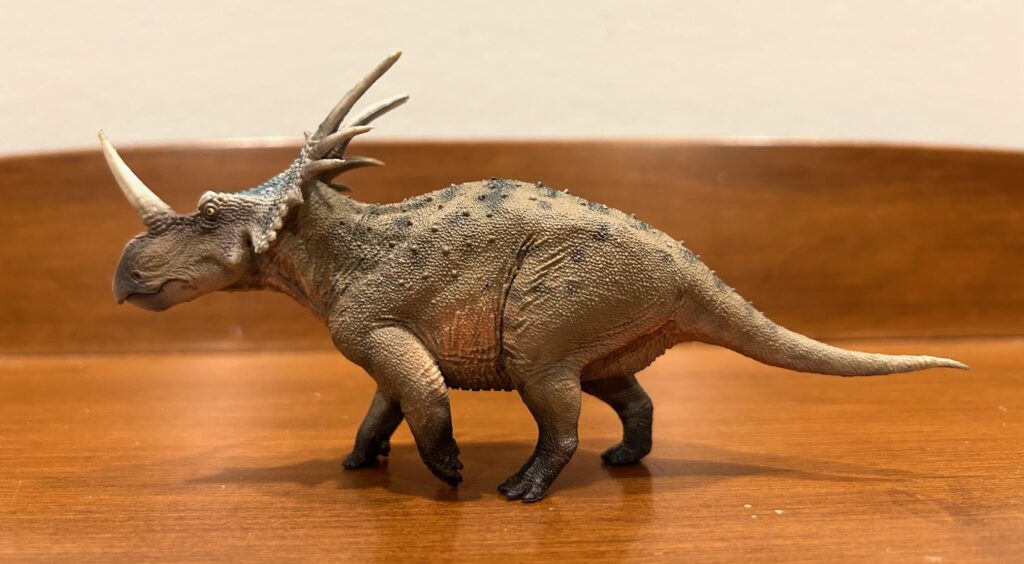
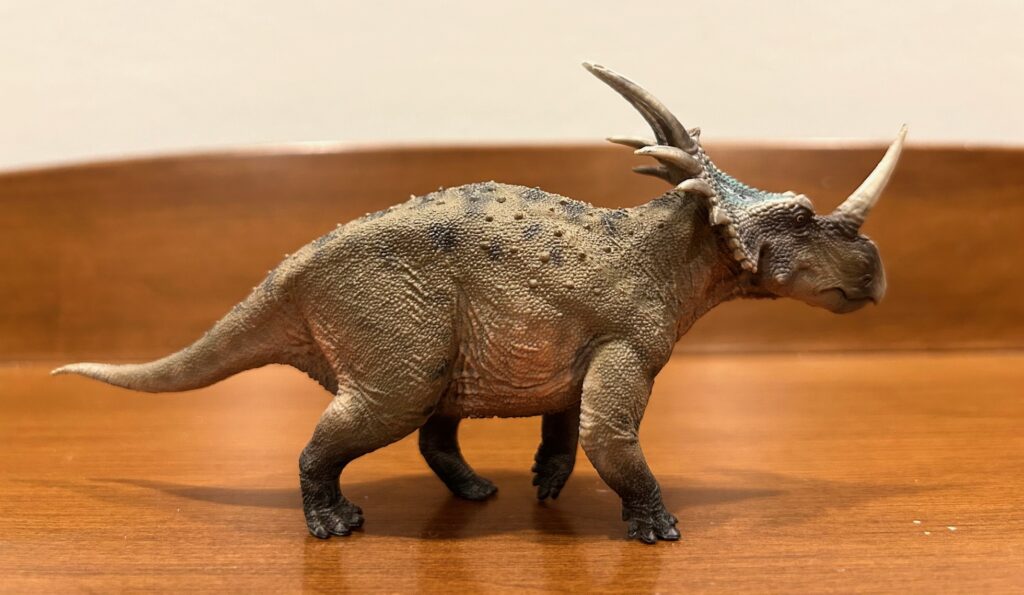
My very first Haolonggood ceratopsian review is the always stupendous Styracosaurus, part of that elite group of prehistoric animals that requires no description here on the blog. Mine is the “Hou Jian” version as opposed to the “Chen Da” one. I call him Thraex. From the point of his nasal horn to the tip of his tail, he measures 16 cm long and stands 7.5 cm tall at the points of his uppermost parietal spikes.
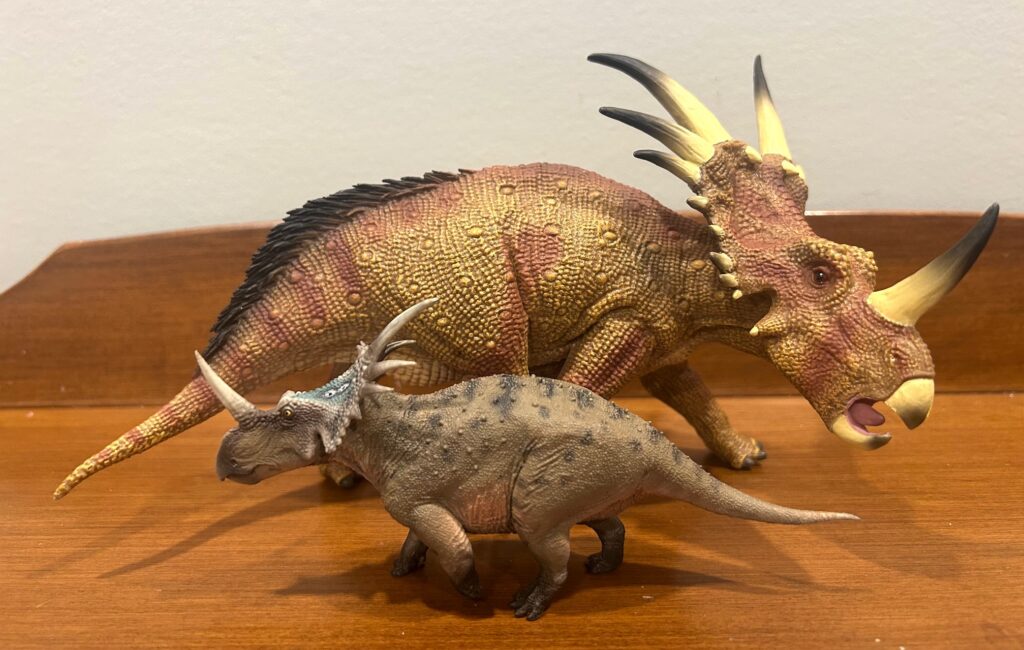
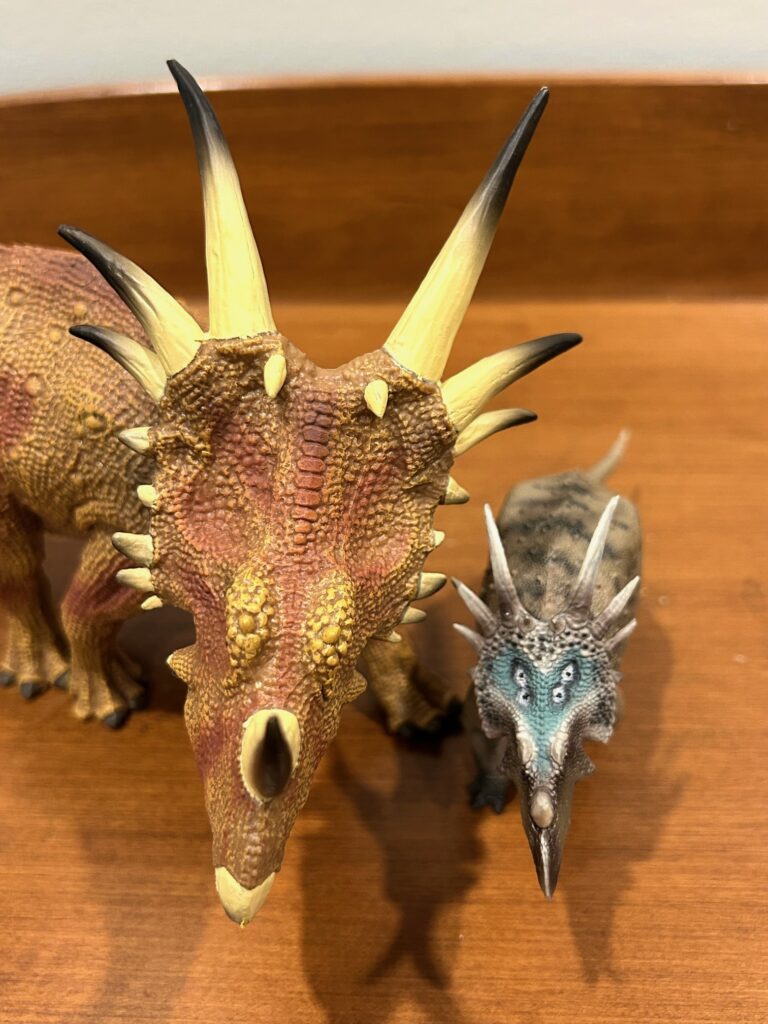
Thraex’s main colour is a dull brownish-green with blackened feet and black claws and pink on his underbelly. Black markings also run down his back. Dark brown patches adorn his skull and his frill features black spots surrounding a large splash of teal with four relatively small black and white eyespots. The spikes on the frill and the large single nasal horn are ivory coloured.
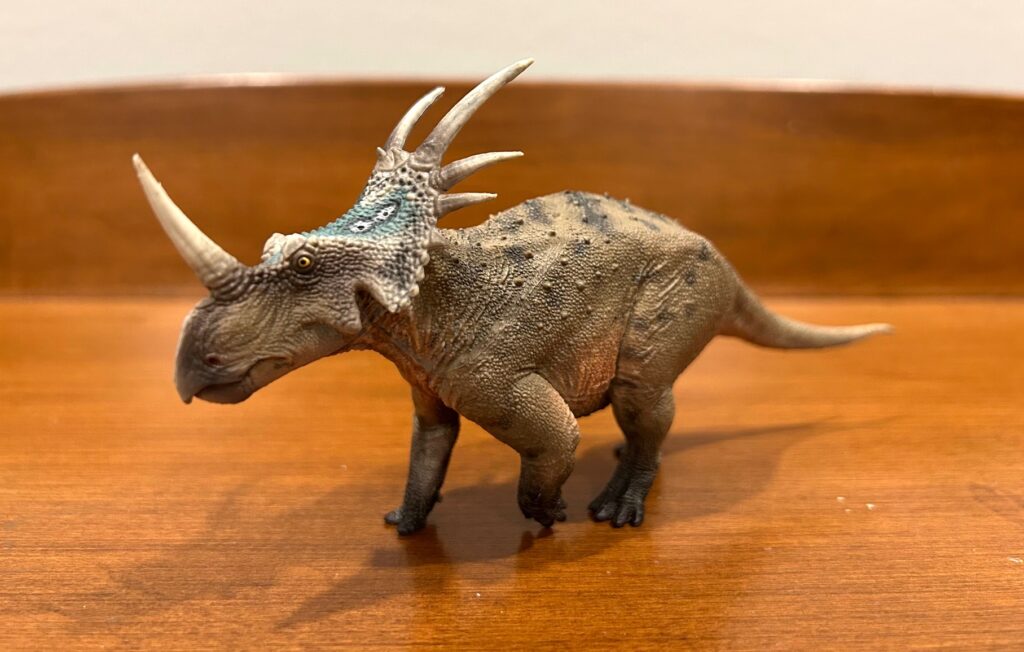
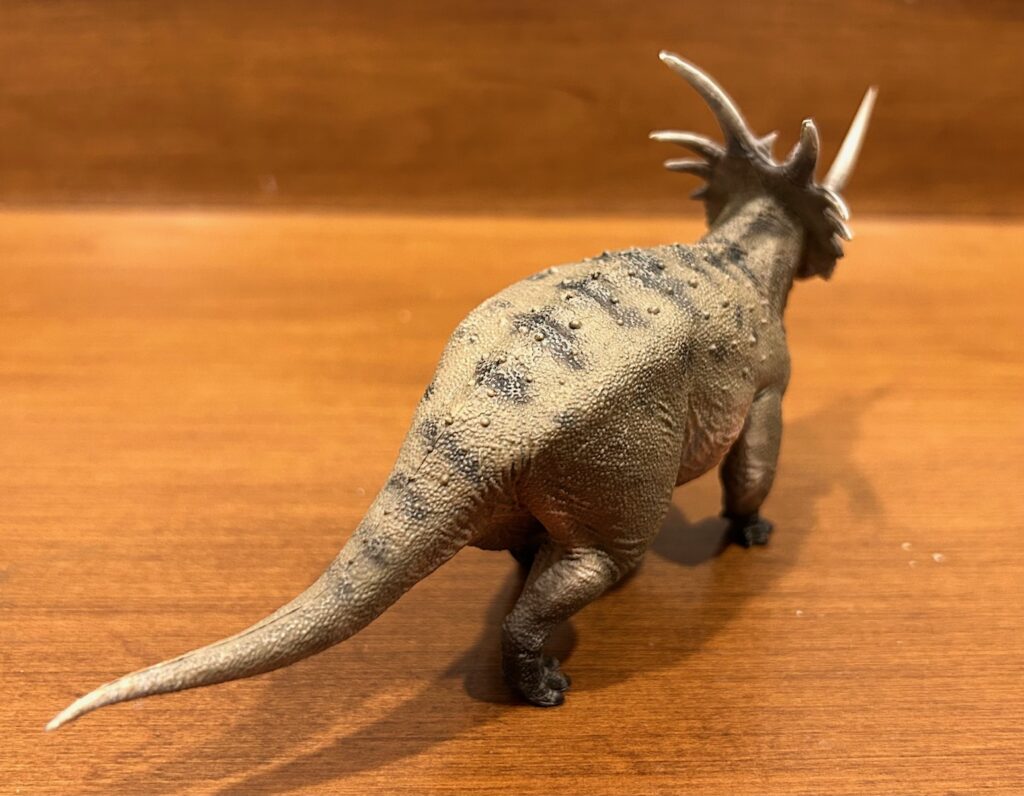
Thraex is sculpted marching along with his left front leg swung back in mid-step, his tail raised and swinging slightly to the left, and his head held high, facing forward, and tilted a little to the right. His mouth is closed and his eyes are wide and alert. He looks confident, determined, and serious. Certainly not a beast to be taken lightly.
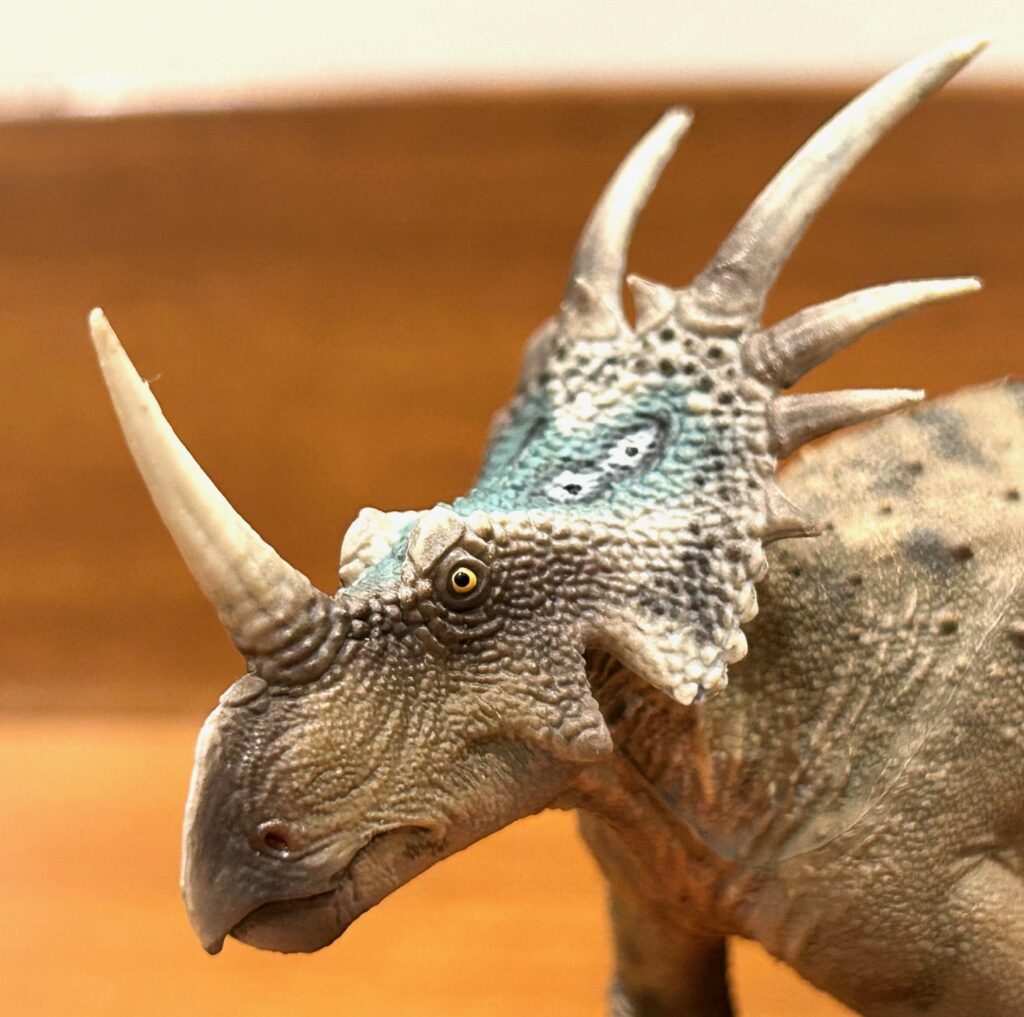
Especially not with that nasal horn, which is impressively long, grooved, and very pointy at the tip. The large beak is smooth, while the skull is covered in tiny scales. Small ridges are present atop the eye sockets and the frill is covered in larger, bumpier scales. And of course, growing out of the rim of the frill are the characteristic parietal spikes, the two topmost of which are even longer than the nasal horn. All these spikes are just as pointy too. This is most assuredly not a toy for the aichmophobic.
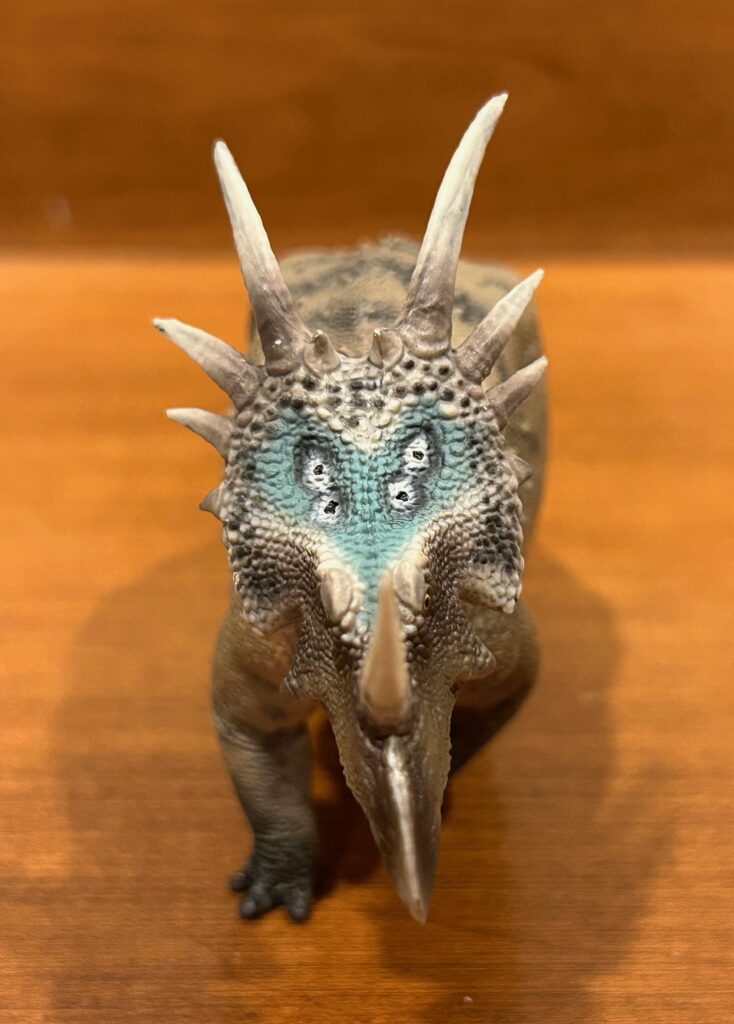
Thraex’s neck is appropriately thick and wrinkled. His body, limbs, and tail all have the familiar ceratopsid shape, with visible musculature and the correct number and arrangement of digits on the feet. Scales and wrinkles cover all these parts too, along with round osteoderms dotting the back and flanks. An excellent sculpting job all around.
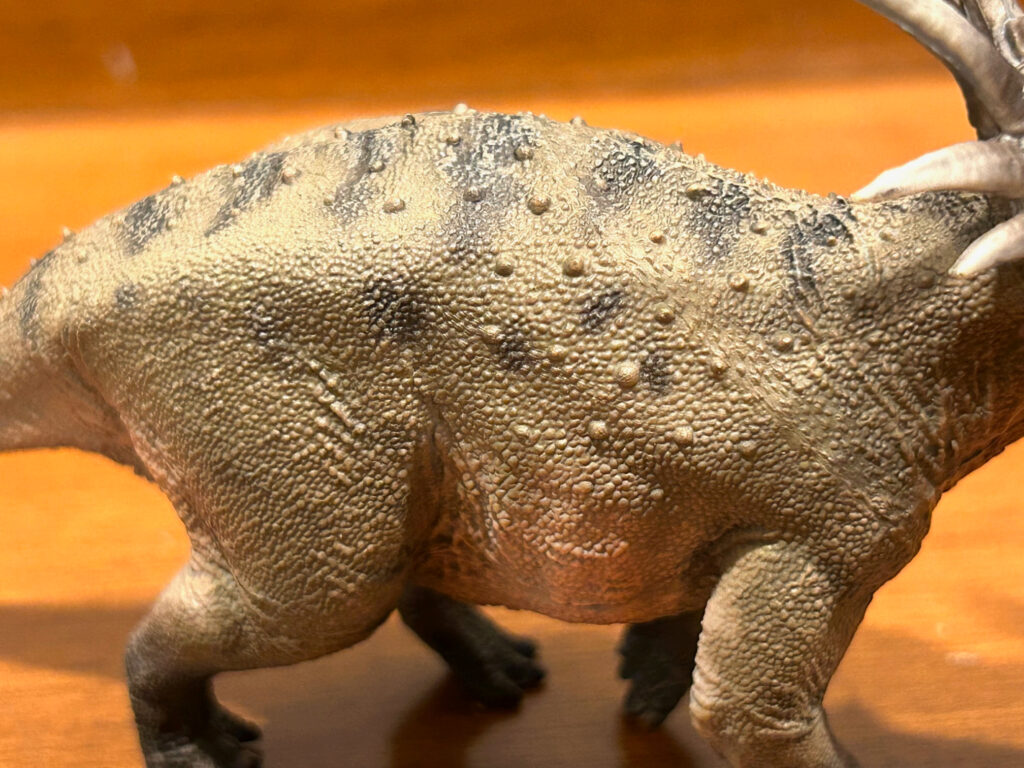
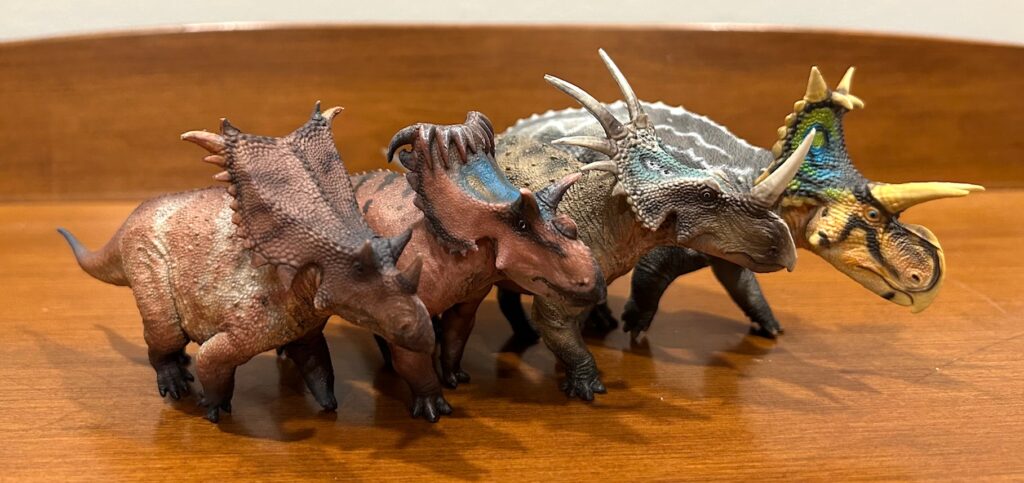
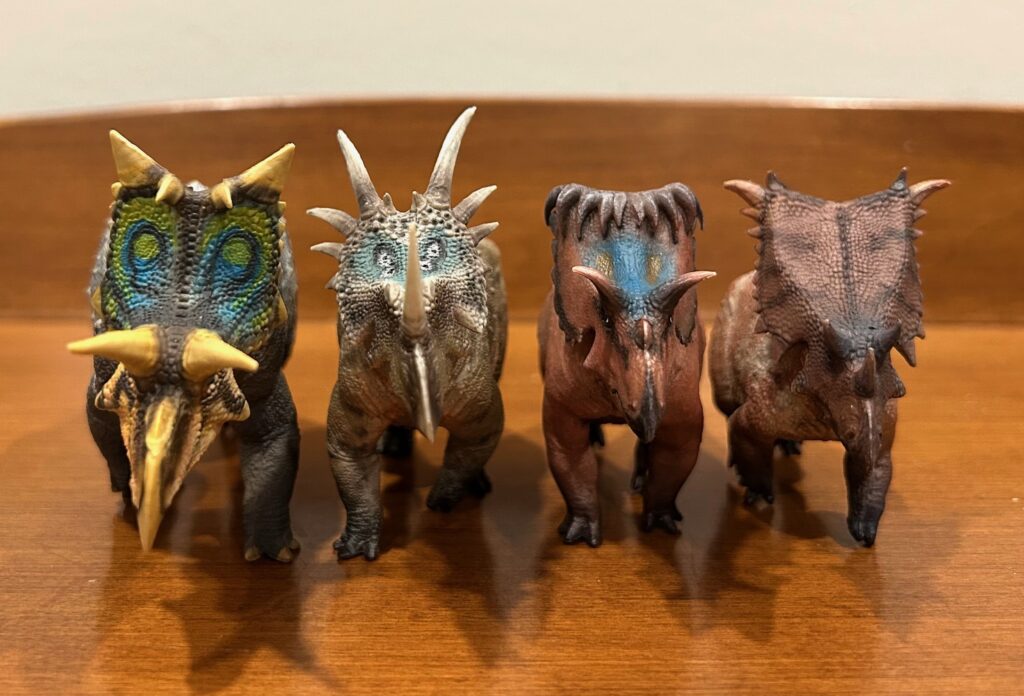
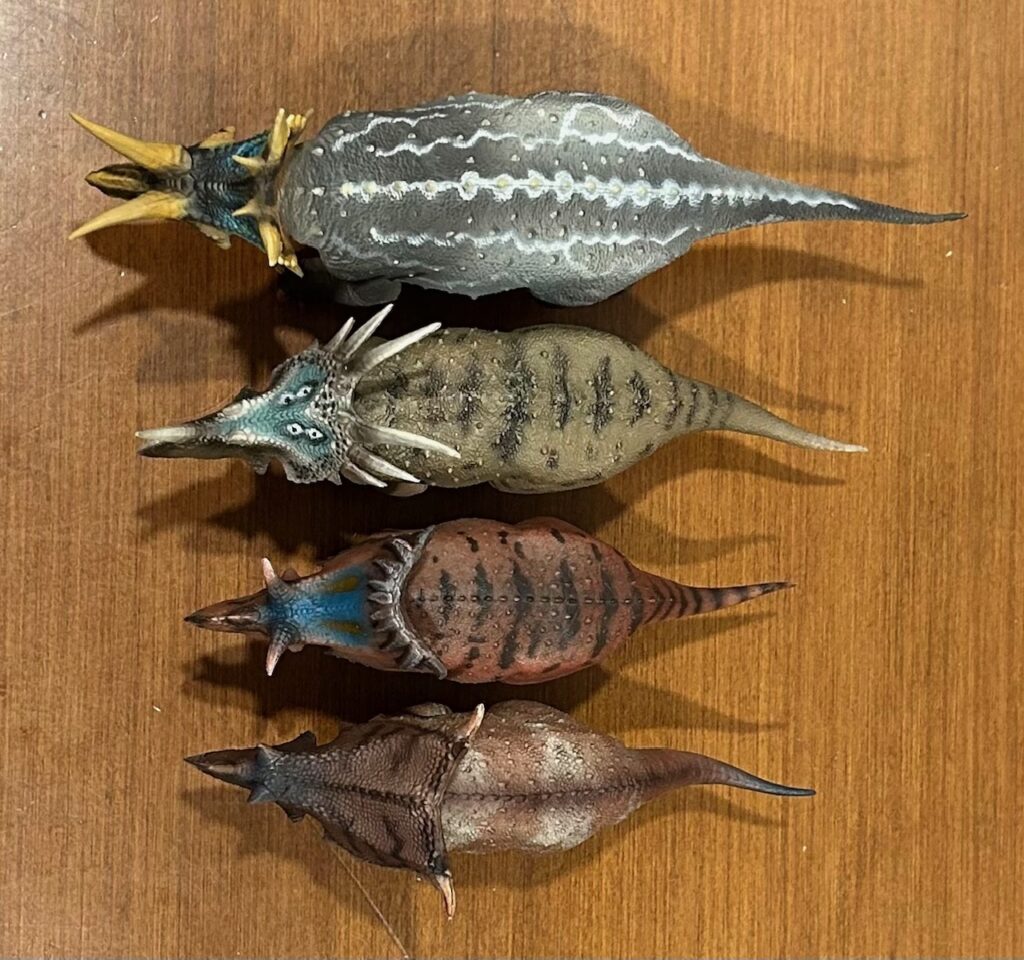
Thraex here is a perfect example of how Haolonggood’s ceratopsians have come to easily rival the ones by PNSO and Safari Ltd. Anyone who has not yet acquired a Styracosaurus for their collection, or has a particular fondness for the species would be well advised to go with this one.
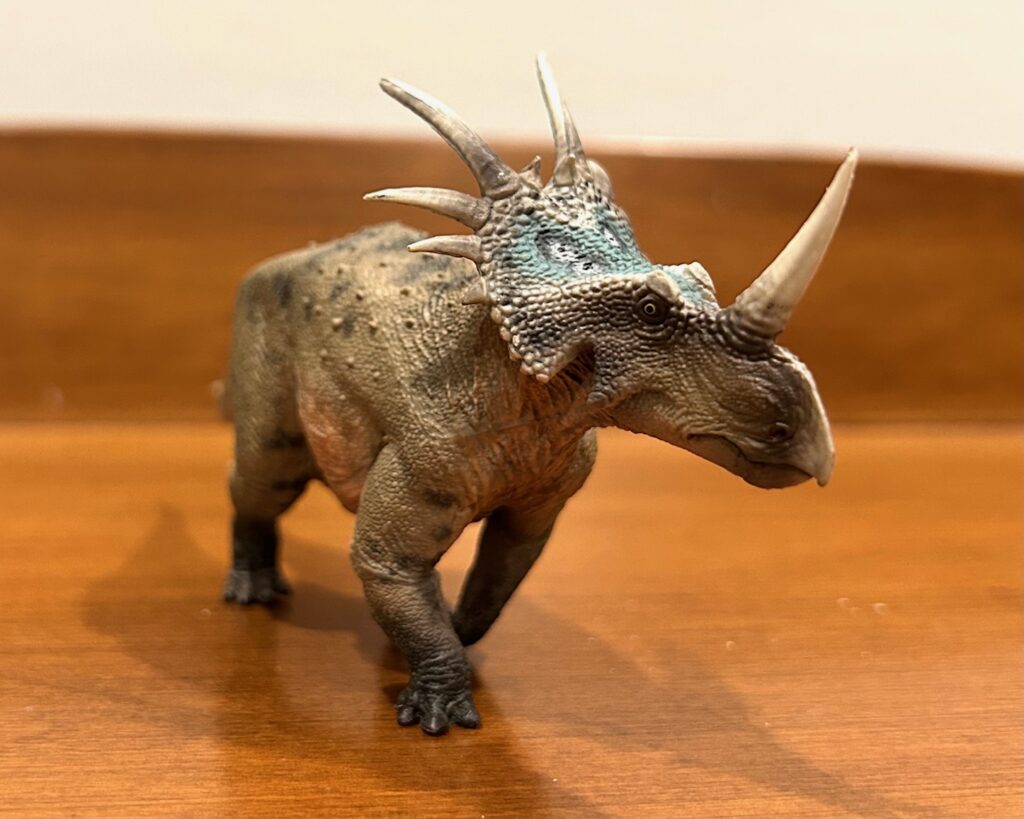
Disclaimer: links to Ebay and Amazon on the DinoToyBlog are affiliate links, so we make a small commission if you use them. Thanks for supporting us!



